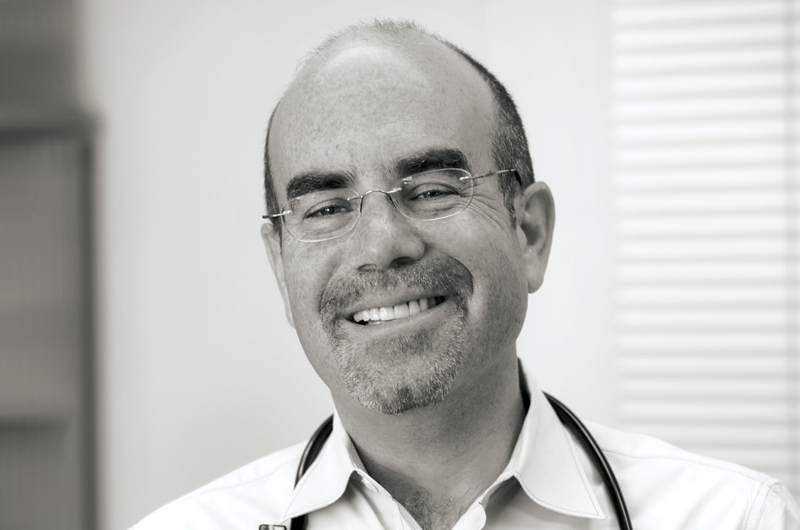Dr. Jeremy Friedman
Mar 31, 2018 - Profiles
Q&A with Dr. Jeremy Friedman, Associate Paediatrician-in-Chief at The Hospital for Sick Children on the importance of avoiding unnecessary tests in pediatrics.
Dr. Jeremy Friedman
Mar 31, 2018 - Profiles
Q&A with Dr. Jeremy Friedman, Associate Paediatrician-in-Chief at The Hospital for Sick Children on the importance of avoiding unnecessary tests in pediatrics.

Dr. Jeremy Friedman is the Associate Paediatrician-in-Chief at The Hospital for Sick Children (SickKids) in Toronto. For over 25 years, Dr. Friedman has been practicing as a pediatrician and active in leading efforts on appropriate care in children’s health. Dr. Friedman’s involvement in Choosing Wisely Canada began when he noticed the extent of overuse and especially the harms associated with unnecessary tests and treatments in paediatrics. As a teacher and mentor to trainees, he emphasizes the importance of critical thinking in patient care and incorporating resource stewardship in clinical practice.
In 2016, the Department of Paediatrics at SickKids created a Choosing Wisely recommendation list, specific to a tertiary care children’s hospital. The evidence-based list was developed by involving clinicians and trainees at the organization. In 2017, SickKids released phase two of their Choosing Wisely initiative with a new list of recommendations including surgery, intensive care, and others.
Choosing Wisely Canada: How have you incorporated the Choosing Wisely Canada recommendations into your practice?
Dr. Jeremy Friedman: When we first started this initiative in 2016, there were no specific Canadian Choosing Wisely recommendations in paediatrics. Although recommendations were subsequently released by the Canadian Paediatric Society in 2016, the guidelines were not specifically focused on clinicians practicing in a tertiary care children’s hospital. So for this reason, we went to our stakeholders and developed the ‘top five’ SickKids Choosing Wisely recommendations list based on input from front-line clinicians, supported by strong peer reviewed evidence. In 2017, we released a second top five list including not only our paediatric faculty but also our surgical colleagues at SickKids. I have been pleasantly surprised at the uptake of these recommendations on both a micro and macro level. At a micro level, for example, we have seen a significant decrease of 80 per cent in the unnecessary use of nasopharyngeal swabs testing for respiratory viruses in children with viral illnesses in our emergency department. At a macro level, the list and awareness campaign around the recommendations has created a ripple effect that encourages and empowers clinicians to think more critically about what they order. We’re having more conversations about resource stewardship and I believe this is helping change our entire culture and approach to ordering tests and therapies.
CWC: What is your approach to having conversations with patients about things they may not need?
JF: In paediatrics, I find sometimes these discussions can be even more complex than in adult medicine. For many of our young patients, these discussions would involve parents and often grandparents and extended family. We have to make sure everyone involved understands our reasoning for ordering or not ordering a test or therapy. This is not about rationing care or saving money, but about minimizing harm and trauma to our most vulnerable patients. One needs to recognize the anxiety and emotion that is involved when it comes to illness in children. My personal approach is to be honest, transparent, and share my thought process in how I plan to treat their child’s illness in the safest, most efficient, least invasive way possible. I have found that almost all parents welcome these conversations and are keen to find treatment plans that avoid unnecessary tests or invasive studies that may be painful or traumatic for their child and may not actually alter our overall management.
I also am careful to communicate with colleagues and trainees that the recommendations are not all or nothing. A dogmatic approach to interpretation of these ‘do nots’ is not a good idea either. There are many factors that enter into making these decisions. So for example, I am never critical of trainees on rounds when they somewhat sheepishly tell me they’ve ordered a test or a therapy that is on our ‘do not’ Choosing Wisely list, as long as they can explain their rationale and the thought process involved in making this decision. Many times ‘less is more’, but actually occasionally ‘more is more’!
CWC: What is your motivation for being so involved in efforts to reduce unnecessary care?
JF: My motivation is that I sincerely believe we have a serious responsibility to protect our patients (and their families) from unnecessary and potentially harmful care. These tests are often uncomfortable for the child in terms of requiring extra needle pokes or an IV placement. There are also many risks involved with unnecessary medications or even unnecessary radiation exposure in children. Sometimes it seems easier to do everything to everyone, to minimize the risk of ‘missing’ something and give the perception of being really thorough. Every day I see tests and therapies ordered which could likely be avoided by more thorough history taking, physical examination, review of testing already done and critical thinking. I also believe if you work in a teaching hospital, it’s imperative to be a role model for critical thinking and taking the time to provide the safest, highest quality care and not just the defensive less thoughtful throw the book at everyone approach. Many trainees will take their cue from what they’re exposed to in these impactful years of training, and it’s going to set the tone for their practice for the next 30 years.
